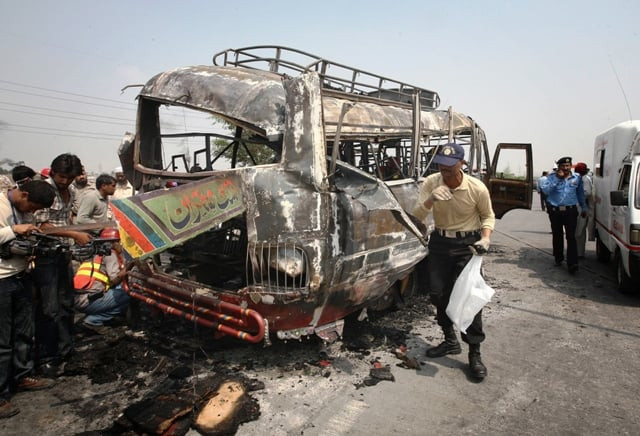Travelling to death
Better safety standards could have quite possibly saved the lives of those aboard the bus.

Travelling to death
Accidents do happen. Some perhaps are inevitable. But we wonder if this one was. The use of substandard CNG cylinders is said to be a common feature on our public transport vehicles, and perhaps also on private ones. There are no means to deal with fire such as fire extinguishers or even basic first-aid kits aboard these vehicles. Also, most public transport vehicles have no emergency exits and many have their structures modified to increase seating capacity. Clearly, we need some review of the safety of public transport vehicles running across the country, and rules that look into their maintenance. Going beyond this, the abilities of drivers should also come under some scrutiny. Many private companies ply buses and coaches down highways with the sole aim of minting money, paying no heed to the safety of those who travel in them. Transport authorities need to demonstrate a far greater modicum of responsibility and vigilance. There are also some issues of policy inherent in this. When the drive to promote CNG was launched in full earnest some five years ago, safety issues, it appears, were ignored altogether. The same lack of concern applies to other areas of life as well — with disregard for human life evident at factories, mines and in many other places. Better safety standards could have quite possibly saved the lives of those aboard the bus. We need to see that other lives are not lost in a similar fashion by putting regulations in place that can keep commuters safer, and keep in mind that those in relatively low-income groups who most often use public transport are most urgently in need of better protection, so that the kind of tragedy we saw unfold on July 12 can be averted.
Published in The Express Tribune, July 14th, 2011.














COMMENTS
Comments are moderated and generally will be posted if they are on-topic and not abusive.
For more information, please see our Comments FAQ